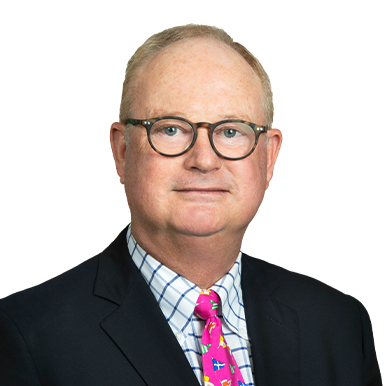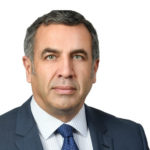Q1: HOW WOULD YOU CHARACTERISE THE HEALTH OF THE CAPTIVES MARKET ON BERMUDA?
Paul Bailie: Things are pretty busy at the moment. The wider commercial insurance markets have been difficult with rates increasing and we’re seeing increased activity in the captives segment, as a result. In particular, some of our existing clients are doing more than they were, say two years ago, but we are seeing new captives as well.
Matt Carr: I’m a partner in the corporate team within Appleby Bermuda with an insurance and reinsurance specialisation. I cover all forms of commercial insurance and reinsurance, long-term business and, of course, captives. We help companies deal with regulations and help with things such as feasibility studies and planning.
Michael Parrish: I’m head of the client service group for Marsh Bermuda, across captives, commercials, long term sector and ILS. We have been very busy, both with existing clients increasing the use of captives, and with new business.
We’ve added four new captives this year. There’s a lot of interest, but that doesn’t always translate into new captives. But there’s certainly a lot more being done by captives already here. The market is good, it’s busy. Bermuda still doing well. The BMA has been very responsive through the pandemic.
I don’t think the Island has really suffered too much in this segment. Obviously, there’s a bit of economic uncertainty on the Island generally, but that relates more to hospitality, not so much international business, which is very strong. It’s business as usual. I don’t think there’s been too much change.
Brian Quinn: Granite Management is a small, independent captive manager, but our real focus is employee benefit consulting.
We’ve seen a big uptick in interest in bringing employee benefits into captives over the past 18 months to the point where we’ve nearly doubled the amount of premium under management for our captive insurance clients.
David Gibbons: I’m a partner at PwC Bermuda, leading our captive insurance practice. The main contrast we’re seeing is a faster speed to market than we have seen previously. Captives, particularly from Canada, are looking to come to market quickly.
We’re also seeing an overall increase in volume of middle-market companies from the US and Canada looking to set up captives.
The level of interest and speed to market is much higher than it has been in the previous three to five years.
Séadna Kirwan: I’m the risk adviser director with Aon; I lead our client value creation across our portfolio of clients. We’ve seen a pretty robust market over the last 18 months again, focused on existing clients getting more out of their captives.
We’ve also seen a couple of captives come out of run-off positions and restart but on the new formation side, we have a lot of enquiries as well.
The new formations aren’t coming through in huge numbers, but some companies are using cells as a sort of step to a full captive. We have seen a number of those cell formations explicitly set up with the long-term view to transition to a captive.
Q2: WHAT ARE THE FORCES DRIVING NEW FORMATIONS?
Bailie: In terms of people coming to Bermuda, I’m not sure the dynamics have changed massively. Our regulatory environment remains the attraction. We’re still a good home for larger, more complex captives. In terms of the expertise on the Island, we’re probably ahead of some of our competitors.
The bigger, more complex accounts that want international programmes tend to come here. Perhaps companies that write purely domestic business in the US are more onshore now and there’s a lot of competition for that type of business.
But we are still seeing growth in the complex and the global, and in areas that are maybe a little newer, where people are doing more innovative things, for example, around climate change and cyber, as well as lines where there have been perennial challenges such as directors & officers liability.
Hard market conditions in the wider markets have probably driven interest and people are being a little more aggressive about how they approach the particular barriers to form a captive programme. The numbers of startups isn’t massively overwhelming but we are also seeing segregated account companies—cells. That’s definitely an area where there is growth driven by hard market conditions.
Some companies are taking a more holistic view to their use of capital to help them better manage capital and risk financing. Perhaps previously they have not used their captive as extensively as they might.
Parrish: There are clear challenges in market conditions. Marsh Global Placement gives a summary of the growth in composite insurance pricing quarter on quarter. Interestingly, it looks like increases in rates peaked in quarter four 2020 at 22 percent.
Throughout all of 2020, it rose 14 percent, 19 percent, 20 percent and 22 percent respectively. This year, prices increased in the first quarter 18 percent and in the second quarter 15 percent.
So while prices are still going up and the market is still very challenging, it does look like the peak of the market was last year, and that it’s starting to stabilise. These are averages across all lines. In certain cases such as cyber and D&O and professional lines the increases would have been vastly more.
Kirwan: The hard market definitely prompted a broader look at what captives could be used for; in a number of cases, they had no choice. The mindset within organisations was when the market was very soft, some felt that they never chased rates right to the very bottom, and they had some loyalty to their carriers. But they didn’t feel that loyalty was rewarded when the hard market came.
In some cases the long-term relationships that they have historically had with carriers have been severely and potentially irreparably damaged.
They are looking into the captive now thinking we actually have control of this over the long term. It’s a much more holistic, strategic look at the captive, trying to remove that reliance on the external market so that they don’t have to follow those peaks and troughs.
It is clear, there are certain lines of business which have been very challenging for buyers, and in those cases they tend to look at captives.
The number of captives managing cyber risk in some form increased 54 percent over the same period. Medical stop-loss increased 81 percent.
These are risks captives really weren’t involved in a decade ago. There are a lot of new programmes being written by captives as a result of challenging market conditions. When the commercial market is difficult, expensive, companies will look at alternatives, and the most common alternative is a captive.
The gross written premium in captives under our management went up in 2020. Again, that occurs as the market hardens, as the market becomes more challenging. That is evidence that market conditions impact captive growth not necessarily in terms of new formations, but certainly in terms of the increased usage of captives.
People are setting budgets for the next 12 months and getting a 20 percent premium next June that’s not in their budget, is very hard to manage.
That is changing the underlying behaviour of captive owners and of the large corporates utilising them.
Carr: We hear from our clients that they’re expecting to see some continued hardening of rates for the foreseeable future.
That may be a driver for continued activity in the Bermuda captive insurance market and we are seeing further conversations and discussions, many around emerging risk areas for example, digital asset risks and cyber.
These are exciting discussions for us as practitioners, but also for Bermuda as a leading captive insurance domicile.
Quinn: Our main focus is on employee benefits outsourced underwriting and management for captives in multiple domiciles including Bermuda, and we have doubled our premium under management in the last year.
A lot of the reasons for the increased interest in captives have been covered already, but once companies start assessing they are looking at how to use their captives in other ways because they’ve been forced to reconsider their captive strategy due to the hardening market.
I have many discussions with clients and potential clients asking me about using their captive to cover multiple different risks. This is not our focus but there’s a lot of interest because the market has made them reconsider. I have seen a lot more interest in setting up captives but also using cell captives structures to facilitate easy access to a captive solution.
There is obviously an appetite for new captives out there and people are expanding those captives. In the soft market we had for probably well over a decade, people weren’t using their captives as efficiently as they should have, and now they’re refocusing.
Gibbons: A lot of companies are more focused on risk than they have been before. The chief risk officer’s voice around the C-suite is being heard more. Therefore, you find people looking at their captive and the best ways to utilise it to mitigate risk.
It’s not only the pricing component, it’s also the impact of culture, and the way people are looking at risk now.
Further, as business environments and risks change, supply chain management and business interruption are more of an issue in the new dynamic of the world.
That is where we’re seeing a lot of discussion on how you can change what your captive is doing and cover not just the pricing and limits, but the new way we’re working in this environment.
Q3: WHAT ARE THE CHALLENGES FACING THE CAPTIVES SECTOR?
Gibbons: There are probably two factors. When you have people choosing a regulatory environment, Bermuda always has a very strong case. It’s probably the most recognised captive in surance domicile in the world, recognised by the NAIC and Solvency II equivalent. The BMA is very accessible. But there are challenges if regulations change elsewhere in the world.
The other one is around talent. A big draw for Bermuda has been the ability to source talent in a confined location. That becomes a risk when the world goes more virtual and you have the ability to pull talent from anywhere; that strength starts going away.
If you can’t have individuals come to Bermuda and visit the reinsurers, brokers, account managers, auditors, lawyers, etc, that pulls away from our draw.
I think we’re more vulnerable in this area than in the regulatory space where we have a strong footing. The remote working environment is a dynamic that we need to be careful of, and we need to ensure that people are still understanding what’s here in Bermuda that you cannot get virtually.
Carr: From a regulatory standpoint, we have a lot to boast about. The bifurcation of our regulatory regime for insurance is important. Some of the other pressures have always been taxation based, and we’re always watching the world’s changing landscape in the taxation realm.
Some emerging good news in Bermuda is our government engaging in discussions about global tax harmony for corporate taxation.
I would add that our human capital and our intellectual capital are key. As a Bermudian I look not only to foster local talent, and I hope all of us can continue to do that, but also to make sure that the barriers to entry are reasonable for international people who are bringing skills to Bermuda that would set us apart. That’s been a key attribute of the captives market here for going on 60-plus years.
We’re still seeing consistent interest around forming new captives from prospective captive clients, and there has been an uptick in the last 12 to 24 months, so I’m remaining optimistic.
Parrish: I don’t think too much has changed, but that’s not necessarily a good thing. We see very few captives formed by US companies now, and those that do are probably here for a specific reason. I agree that the infrastructure here is second to none but there is now a big incentive for US companies to form captives in the US.
From a captive insurance perspective, the US was traditionally Bermuda’s strongest market, and that is why captive numbers are not showing the type of growth we might expect in current market conditions, but growth is still strong in other sectors and from other territories.
The other challenge, that we may not see because we live here, is the increased cost of doing business in Bermuda. That is a major challenge, and I’m afraid it compares unfavourably against the cost of setting up and running a captive in the US.
If it becomes an economic issue, then Bermuda is always going to be more expensive. And with every increasing layer of regulation that we have, with every new piece of compliance from economic substance to cybersecurity regulations, it gets more expensive.
These are all good things, and we accept that they’re necessary, but they increase the cost of doing business here. And it just means that Bermuda becomes less competitive when compared to onshore jurisdictions.
The challenge we face is how do we retain our competitive edge but still retain a compliance and regulatory culture that encourages people to come here because they don’t want to go to an unregulated environment?
They want regulation and they want to be in a domicile which has a good reputation. But the more burdensome that compliance becomes, the more the costs go up. At some point it will just become uneconomic and companies will simply go elsewhere.
Bailie: I agree. The US doesn’t impose anything like the same degree of regulatory discipline we’re forced to deal with. That does put us at a disadvantage, but we can’t make it go away. We just have to work harder, or at least improve it as best we can.
Kirwan: Europe went through this in the early 2010s with Solvency II implementation. That sort of regulatory burden can be hard to turn around. There was an exodus from a European perspective, nearly exclusively driven by regulatory creep. Some concerns were not factually true, but it became a big issue.
Bermuda has to be very careful to continue to focus on what we’re trying to achieve. Our clients ensure they have time to address the risk issues of my parents. The regulatory and compliance stuff is a necessary evil but there is a tipping point. It’s a very precarious position and we have to tread very carefully.
Bailie: The BMA remains flexible and user-friendly, which is a relief compared with dealing with some other regulators. But that doesn’t make the other compliance issues go away in Bermuda. The regulations and code of conduct are what they are.
Quinn: I would focus on attracting and training people; that’s the biggest challenge I have. My business is primarily based in Bermuda, but it’s much more international. I deal with captives in multiple domiciles, including Bermuda, but attracting talent to come here or training people here can be hard. COVID-19 has made that more difficult.
I agree that attracting people to Bermuda can be tough. People aren’t as willing to move as they were in the past because of the pandemic which has made people refocus their priorities and moving overseas is not as attractive as it once was. In addition, the cost of living in Bermuda is a deterrent.
Carr: I’d like to share an anecdote that illustrates how responsive the BMA can be. Clients approached us about establishing a captive structure in Bermuda. I walked them through the process and they shared that they had been in touch with the BMA for a period of several weeks prior to our call.
The BMA had been a very helpful first point of contact, and while out of the ordinary from a jurisdictional onboarding standpoint, the client appreciated the direct dialogue and insight of our regulator and the candid input they had received to that point.
Our regulator is very hands-on and their door is always open.
Bailie: The challenge on attracting talent is also that we’re competing with the commercial reinsurance industry in Bermuda, which tends to have more money to throw around. But even outside of Bermuda, attracting talent isn’t that easy at the moment. There’s a lot of change going on. A lot of that may be around remote working and different approaches to work-life balance. It’s probably going to take us all some time to get used to.
I don’t think it’s restricted to Bermuda. I know this because we’re seeing some similar issues in other locations. Some of the roles are changing right in front of our eyes.
Kirwan: We have to be conscious from a tax perspective. In a fully virtual world, you cannot be anywhere and do anything because there are tax consequences for our clients.
We have to demonstrate that the main core of the business is done in Bermuda. We have to be very conscious of that when we’re trying to attract talent.
Carr: There are a host of challenges in terms of recruitment these days. It is a competitive industry. The counter argument to that is there are a lot of highly skilled professionals in Bermuda from all over the world already, and these persons help to attract other skilled professionals from those nations.
Bermuda is a very sophisticated locale and has a lot to offer international professionals from quality of work and quality of life standpoints.
Q4: WHAT INNOVATIONS ARE YOU SEEING IN CAPTIVES?
Parrish: There are new industries and therefore new risks and captives can focus on these. The digital asset business is interesting and very much something that Bermuda is focused on. The government is very keen to promote Bermuda as a hub for digital asset business and the captive industry will play a role in that.
The BMA has introduced new licence categories, which are designed to appeal to companies which are innovative, and many companies in that field would consider themselves to be innovative.
They also have the regulatory sandbox, which is an opportunity for new companies to try and do a bit of a proof of concept and work within an environment that doesn’t have quite so much regulatory rigour. There has certainly been interest and we have transitioned a company from one class to anther using it.
That kind of innovation will continue. That’s the way forward for Bermuda. That kind of innovation is good.
The other thing that we’ve seen a lot of this year is the cannabis industry and its potential to use captives. Bermuda has become the default domicile for Canadian cannabis companies that want to form captives.
Is there going to be hundreds of those? No, there isn’t. But that’s again, an example of innovation, where a lot of other domiciles took a step back.
In contrast, the BMA got on the front foot and said that they were quite happy as long as the business is federally legal. Obviously, that precludes cannabis business in the US for the moment, because it is not federally legal there. But in Canada, it is federally legal.
Meanwhile, other captives have been formed in response to difficult market conditions. Those new companies struggled to get D&O cover, for instance. The market conditions have pushed these new companies to look at captives. Some of these startups are pretty entrepreneurial so they see how a captive can work for them and they do it. Now, even if the market softens again, they are used to working in that captive environment.
There are other new risks coming. We are looking at doing things such as vaping liability which, again, is difficult to buy in the commercial market. So that’s a great example of where Bermuda does have an edge. Bermuda remains the centre for those sorts of innovations.
Bailie: Climate risk is something we are starting to look at in more depth. We have done some work based out of Asia. We see it as an area where captives are going to have a big role to play, almost certainly. It’s still a work in progress. We’re still trying to get our heads around some of the issues.
There are some interesting tools that might make a captive vehicle an ideal way to manage some of those risks. And more generally, we are seeing more analytical tools to help companies better understand risks, the interdependencies between various risks and the capital you need to manage those risks.
Carr: Some of the emerging risks we are seeing captives look at include securing hot and cold storage wallets for crypto as well as crypto exchanges, coin offerings—things that weren’t happening three or four years ago. Those risks are closely scrutinised but I think we’re going to see insurtech help play a role in those captives as well.
We are on a precipice for a new kind of digital world. It has been nice to see some of these types of clients in the pipeline. They are looking to expand what they’re doing in Bermuda and looking closely at how they can harness the insurance expertise here.
Gibbons: From an innovation standpoint, I want to focus on education. We need another wave of captive risk managers coming in now; you’re seeing a changing of the old guard to a new guard. A lot of these individuals are coming in with some new perspectives, but maybe not the level of knowledge as to why a captive was set up to begin with.
The onus is on everyone in this roundtable and our many compatriots to educate them as to why a captive was set up, what has changed, and what has remained the same—so that they understand the full value proposition.
A lot of the new risk managers are focused on climate change and cyber and all the various new areas of risk, but they also need to understand the existing areas of risk. We need to work through the journey with this new generation of risk managers.
Kirwan: We’re seeing captives do more and become bigger and more strategic. Newer risk managers don’t just want captives to be essentially replacing the insurance coverage, they want them to be an enabler of the overall strategy of the business.
We are also seeing a lot of questions around the broader ESG initiative. And how can the captive support and enable a broader ESG strategy within corporates? Thinking about how we can position the captive as an enabler of that strategy in terms of things like the climate risk is helpful in that sense.
That will also come into underwriting. One client is trying to change its underwriting model so that all of its future property builds will be built on a sustainable basis. And the captive will reward that change through better, cheaper insurance coverage from the business unit perspective. Again, the captive becomes an enabler of the ESG strategy.
The more the ESG idea gets bandied around the more the idea of a green captive seems more and more prevalent. How can we make our captives more green?
Bailie: There is a new breed of risk managers. There’s quite a bit we can do to bring them up to speed, but some of their priorities are a bit different.
There’s a lot we can learn from them too, in terms of what they’re trying to achieve.
Carr: We have formed a climate risk finance team and I think it will be an exciting time around such risks as Bermuda and the insurance market look to embrace ESG.
Bermuda is moving in that direction in lots of ways. There are many discussions going on behind the scenes, in ocean use and conservation for Bermuda waters, for example. That dovetails nicely with what we’re seeing in our own professional realms.
Quinn: I’ve been in Bermuda over 20 years, and innovation is always here. It’s one of the selling points for Bermuda that we have captives here and the innovation.
But for my area on employee benefits, we’ve been doing a lot of work. We are using captives to fulfil clients’ diversity and inclusion goals on a global basis, for example putting in transgender cover or fertility treatments.
That is a big driver for us and our clients now and it has been led by us here in Bermuda.




















